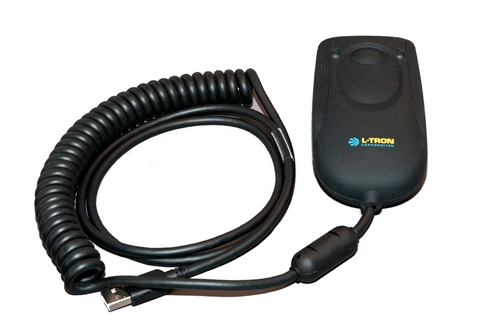
So, you’re ready to enter the 21st century with your traffic patrol by embracing eCitation technology. Congratulations! Your patrol officers’ error rate will drop to virtually zero since the data comes directly off the offender’s license and registration. Officers will also become more productive overnight. eCitations decrease the time of a traffic stop from the typical 15+ minutes for a hand written ticket to less than 5 minutes for an electronic ticket. Both this decrease in errors and increase in productivity can largely be attributed to the use of a barcode scanner. Some officers call this a license reader since it reads the barcode on the back of a driver’s license.

Now, down to the nitty gritty. While this may not seem important to you at first, how the barcode scanner connects to the computer is critical. Let me explain. (*Note: Because most computers and peripherals only support physical USB connections, I will limit my discussion to that type.)
Every device physically connected to a computer through a USB port can have one of three interfaces:
- It can look like a keyboard
- It can look like a serial (COM port) device, or
- It can be part of the HID class of devices.
Today I will cover the first interface:
USB Keyboard
The name pretty much describes the functionality. Any device connected as a USB keyboard behaves as if it were a keyboard. Most of these types of devices use the default keyboard driver that comes with the operating system (OS). This means there is no driver to install in order to use the device. Applications share a USB keyboard device just like they would an actual keyboard. Let’s say you have 5 Notepad windows open editing 5 text files. Whichever window is on top (the technical term is “has the focus”), receives the characters typed on the keyboard.
If you have a barcode scanner configured as a USB keyboard device, whatever you scan goes to the window that has the focus. If you plan to scan data into multiple applications without having to constantly open and close them, the USB keyboard interface may be what you need. Many law enforcement patrol car environments only have one application that can take data from a barcode scanner. If you have multiple windows open at the same time, barcode scanner data can inadvertently go to the wrong application, causing confusion with officers in the field and sometimes unintended consequences or even data loss.
Another property of a USB keyboard device is that it supports communication in only a single direction: from the device to the computer. Many barcode scanners are actually multifunction devices. Besides reading a barcode, they can also take pictures, also known as image capture. If the barcode scanner is configured as a USB keyboard device, the software cannot programmatically change the function of the device. For example, if your software supports reading drivers’ licenses and taking pictures, it would be easier for the user if the software would send a command to the scanner to change between these modes. If the scanner is a USB keyboard device, it does not accept commands. The cumbersome way around this is to have the user scan a configuration barcode that changes the mode of the scanner. You would need a configuration barcode for each mode. The bigger problem is that most applications expect text data from a keyboard, not an image.

Check back soon for part 2!
